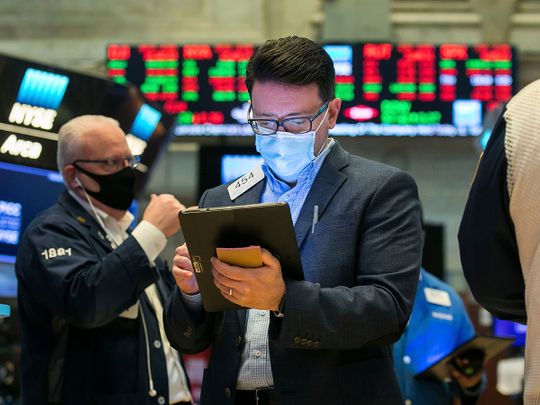
Dubai: The second half of 2021 begins for markets in the week ahead, which has historically been a period of potentially slower gains for stocks. Investors will watch out for concrete signs of how the economy fares during the second quarter, which ends in the coming week.
On Friday’s June jobs report in the US will be the highlight of the week with about 700,000 jobs expected and investors are scour the data in particular for signs of inflationary pressures.
Eyes still on US inflation, jobs data
Although the expected figure is better than the 559,000 recorded in May, it is below the forecasts of several months ago that foresaw monthly gains of at least a million jobs.
The data is also being watched as a gauge on whether the current jump in inflation at the world’ largest economy will persist in the weeks to come as worker scarcity can make goods and services more expensive.
Inflation has been front-and-center of investors’ minds, with the latest US personal consumption expenditures (PCE) data showing a measure of underlying inflation rose less than expected in May.
Stocks enter H2 on high note
Stocks have turned in a mixed performance for the month of June so far. The widely watched US benchmark S&P 500 was up 1.8 per cent as of Friday for the month, and up 7.7 per cent in the second quarter for a 15.6 per cent year-to-date gain.
The tech-heavy Nasdaq was up 4.4 per cent in June and up 8.4 per cent for the quarter. The Dow, meanwhile, lagged in June with a modest 0.3 per cent decline, but it is up 4.4 per cent quarter-to-date.
Market gains at slow pace
Market analysts expect the market to continue its upward course into the second half of the year, albeit at a slower pace. Some view that the period could bring a pause in the rally before the market ends the year higher.
Global stock markets ended last week on a high after oil prices headed toward a fifth consecutive weekly gain as growth in demand is expected to outstrip supply on bets that OPEC+ producers will be cautious in returning more output to the market from August.
Gains from oil prices improve outlook
US crude rose 0.85 per cent to $73.92 per barrel on Friday and Brent was at $75.90 up 0.45 per cent on the day. Both benchmark contracts had settled on Thursday at their highest levels since October 2018.
Moreover, to the satisfaction of investors, the US government made headway on an infrastructure agreement to extend the US recovery after massive fiscal stimulus helped the economy grow at a 6.4 per cent annualised rate in the first quarter. The plan is valued at $1.2 trillion over eight years.
Analysts at Denmark-based Nordea Asset Management wrote in a note that the deal was likely big enough for the economy, without overheating it unnecessarily, and that it meant growth expectations will improve somewhat.
Liquidity-driven market currently
The pan-European STOXX 600 index edged up 0.1 per cent at the end of last week and MSCI’s gauge of stocks across the globe gained 0.4 nearing a record high reached on June 15. Britain’s FTSE 100 index was up 0.4 per cent and Germany’s DAX edged up 0.1 per cent on Friday.
Meanwhile, emerging market stocks rose 0.94 per cent. MSCI’s broadest index of Asia-Pacific shares outside Japan closed 1.02 per cent higher, while Japan’s Nikkei rose 0.66 per cent.
Monetary and fiscal stimulus around the world in response to the COVID-19 pandemic is boosting financial assets, despite an uneven pace of recovery between regions. With prices of bonds, equities, commodities all going up - that implies that it currently is very much a liquidity-driven market.








